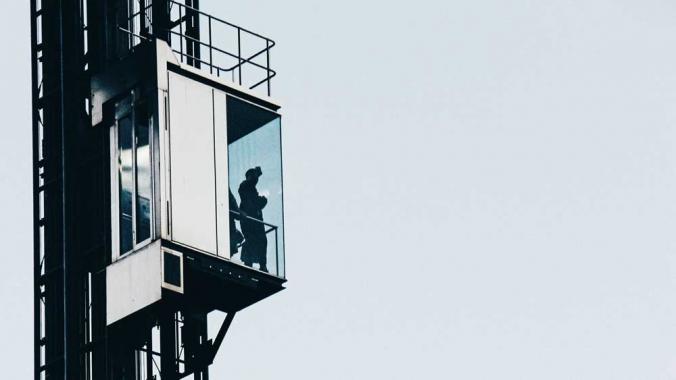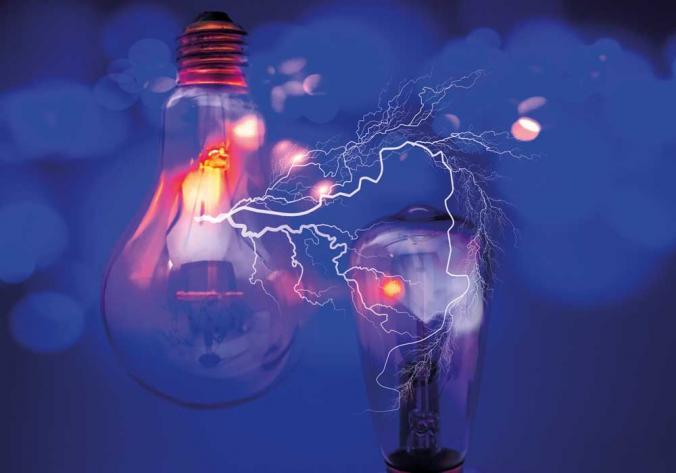Preventing Shutdowns and Fires
Thermal imaging has become an important tool for electrical inspections in many industries. A power failure can result in expensive shutdowns. But there is more. Aside from the production loss there is a greater danger: FIRE!
A small electrical problem can have extremely far-reaching consequences. The efficiency of the electrical grid becomes low, and so the energy is spent generating heat. If left unchecked, heat can rise to the point where connections start to melt. Not only that, but sparks can fly, setting the environment on fire. Insurance companies are now taking this into consideration and require regular thermal inspections. This provides new opportunities for dedicated specialists. The company EGI in Duisburg is a perfect example.
The electrical systems specialist EGI was established in Duisburg in 1980. Today EGI provides its customers in the areas of industrial, commercial and building technology with electrical installation services. More than 40 employees work for the company with DIN EN ISO 9001, DIN 14675 and OHSAS 18001 certifications.
Michael Weigt has been Managing Director since 2005 and has strengthened the company with regard to management and engineering. He also focused on extending the business model and identified thermal imaging inspections as a new opportunity.
Thermal Imaging Inspections as an Additional Service
– I asked myself the question which service we could offer that requires additional know-how that our customers don’t have themselves. Thermal inspections of electrical installations were a perfect opportunity, explains Michael Weigt. In 2007 Michael Weigt researched the thermal imaging camera market, obtained information about different manufacturers and tested various thermal imaging cameras at trade shows.
– From the very beginning, I was not looking for a toy, but a well-engineered and high-resolution thermal imaging camera. Michael Weigt was impressed by the image quality and attractive design of the FLIR T360.
– In the midst of the economic crisis, our new thermal imaging business got off to a slow start in 2008/2009, says Michael Weigt in retrospect. We faced scepticism and the same arguments over and over:
– We’ll check that ourselves. Our own electricians can do that. We don’t have a budget right now for thermal inspections. But Michael Weigt didn’t let this deter him, because he was convinced of the potential of thermal imaging for electrical inspections.
He and some of his technicians followed a training course in order to gain more in-depth knowledge of the thermal imaging camera and software. In the beginning, the jobs consisted of examining individual electrical cabinets in schools, hospitals, banks and public buildings. Today EGI inspects electrical installations for industrial customers.
Thermal Imaging for Electrical Inspection
– Control rooms can include up to 40 electrical cabinets and they have to be inspected every 4 years. This is not only stipulated by law, but also required by insurance companies for fire prevention. And this makes a lot of sense, says Michael Weigt from experience, because some of these control rooms have been in operation for 30 years.
– Old cable coating can become porous, Weigt explains.
– External factors such as UV radiation and subsequent chemical processes in the material change the softening agents in the plastic coating over the course of time, thus making it more brittle and causing it to break off.
In addition to this, contact points oxidize and fuses become overloaded. Thermal imaging camera detects this immediately. Defective electrical components are then noted for replacement during the next planned shutdown. Inspection with a thermal imaging camera allows the system to be under load. Electrical systems tend to heat up before they break down. A thermal imaging camera will clearly identify hot spots so that preventative action can be taken before failure occurs.
Thermal imaging can also be used to detect asymmetrical loads. The reason for this is not always faulty modules. Older systems have often been extended over the course of time. In such cases, an electrical circuit could be exposed to more load than originally intended. This requires immediate action, because excess load can cause heat problems and pose a fire hazard.
– If serviced regularly, even older electrical installations can run smoothly and unplanned shutdowns and high costs of downtime can be efficiently avoided, says Michael Weigt.
Thermal Imaging for Quality Control
EGI not only provides thermal services, but builds its own electrical switchboards and cabinets. EGI also uses thermal imaging to monitor the quality of their own cabinets and document this for the customers. All components are wired and each screw contact has to be tightened to a specific torque. A thermal imaging camera is used before commissioning the system to detect excess heat and to immediately correct the problem.
Starting in 2010, EGI received an increasing number of orders for thermal imaging and decided to buy a new thermal imaging camera having Multi Spectral Dynamic Imaging (MSX) feature.
MSX is a new technology that provides thermal image details in real time.
- Real-time thermal video enhanced with visible spectrum definition
- Exceptional thermal clarity to highlight exactly where the problem is
- Easier target identification without compromising temperature data
- Unrivalled image quality. No need for a separate digital photo for reports
Unlike traditional thermal fusion that inserts a thermal image into a visible-light picture, the new MSX embosses digital camera detail into thermal video and stills. MSX provides sharper looking thermal images, quicker target orientation, clutter free reports and a faster route to solutions.
Wide-angle Lens for Tight Spaces
The normal camera comes equipped with a 25° lens, which is ideal for many applications. But thermal imaging professionals often don’t have enough space in tight rooms. Therefore EGI decided to purchase an additional interchangeable 45° wide angle lens, because sometimes the distance to the electrical cabinet is only 80 cm when taking thermal images. Even at such short distances, the 45° lens provides a full picture, in which problem areas, even in thin cables, can be clearly identified.
Technician Andre Bacht is not only impressed by the touchscreen display with its sketch feature. This new feature allows to clearly indicate on a saved image the location of the problem area both on the thermal and the visual image. This can be done immediately on the touch screen of the camera. The indications you make on the thermal image will automatically appear in your report. He also uses the MeterLink feature.
The MeterLink technology makes it possible to transfer, via Bluetooth, the data acquired by an Extech clamp meter into the thermal imaging camera. This saves time since there is no longer the need to take notes during the inspection. Furthermore it eliminates the risk of erroneous notes and speeds up the reporting process since all values are automatically included in the inspection report.
– We used to note the values of a clamp meter separately on a sheet of paper and allocated them to the correct thermal image later on. Of course this posed the risk of mistakes, explains Andre Bacht. He also uses the camera’s integrated wireless LAN feature to transfer the thermal images to his tablet PC.
Michael Weigt’s strategy has been an absolute success.
– Our goal consisted of tapping into a new business area for EGI with qualified services. We have achieved this, and thermal inspection has also proven to be an interesting job. Our thermal imaging cameras are perfect for the task.












